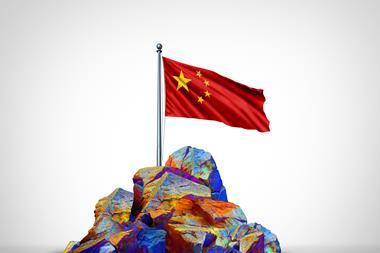Most companies are not prepared for climate-related risks facing supply chains in the next decade, here’s how risk managers and procurement teams can tackle this challenge
From the recent Red Sea attacks to the forced labor exposures, we’ve seen how supply chain disruptions have become a significant concern for businesses, yet many organisations are still underprepared for the risks they face.
A new report from Supplier.io and Impak Analytics reveals just how substantial these risks are, with 45% of companies facing severe consequences to operational continuity, cost efficiency, and regulatory compliance due to inadequate supply chain management.

The report highlights key areas where these risks originate:
- Greenhouse gas (GHG) emissions: 73% of companies are significantly impacted by GHG emissions.
- Water pollution: 49% of companies are affected by supply chain activities, including untreated wastewater, chemical pollutants, and plastic waste.
- Air pollution: 56% of companies are impacted, primarily from supplier activities in transportation and manufacturing.
- Worker safety: 54% of companies face significant exposure to occupational hazards, while 45% are threatened by poor labor and working conditions.
The challenge for businesses
According to the World Health Organizaton, the top four global risks foreseen through 2034 are related to climate change and environmental degradation.
At the same time, studdies from the Hackett Group found that environmental, social, and governance (ESG) initiatives remain a high or critical priority for 42% of executives.
Embedding sustainability is both an expectation and a demand of procurement’s stakeholders including employees, customers, and governments.
The problem? Almost half of companies are still using spreadsheets to manage their ESG data.
Between labor practices, emissions disclosures, and diversity and inclusion metrics, the ESG data landscape is too vast for companies to monitor these facets for hundreds of thousands of suppliers on spreadsheets.
“There is a disconnect between metrics that are tracked and those that are included on executive dashboards.”
Aylin Basom, CEO of Supplier.io, says most companies are not prepared for all but guaranteed climate-related risks facing supply chains in the next decade.
She explains: “Most enterprises are only measuring and reporting the sustainability performance of the top 10% of their supply chains. This lack of visibility leaves businesses open to significant risk.
“More CEOs, CFOs, CSOs and CPOs are prioritising ESG and demanding accountability through accurate, comprehensive reporting – yet too many organisations are still utilising incomplete or misleading data.”
Richard Gardner, senior director, market intelligence, The Hackett Group adds: “The most common metrics used to track the progress of sustainable procurement activities are high-risk suppliers, supplier audits, supplier assessments and high-risk spend.
“However, there is a disconnect between metrics that are tracked and those that are included on executive dashboards.”
The way forward
Basom argues there is a better, more efficient way forward that can improve risk management, compliance, ESG performance, and even a business’s bottom line.
To get started, companies should centralise their supplier data and enrich it with certification, ratings, and other information.
Important questions to answer include:
- Do the supplier’s goals match with global standards like the UN Sustainable Development Goals, a central standard for Net Zero?
- Do they utilise environmental impact assessments that include Scope 3 emissions?
- How are they performing in employee diversity, fair trade and human rights practices?
Basom says: “This sets the foundation for a resilient, sustainable procurement strategy that goes beyond the 10% for maximum protection and benefit.”
Supplier.io and Impak Analytics highlight six further mitigation tactics that businesses should consider:
Supplier collaboration
Given that a significant portion of a company’s carbon footprint often lies within its supply chain, collaboration with suppliers is paramount.
Businesses are developing robust supplier codes of conduct, incorporating carbon reduction targets into contracts, offering supplier incentives and supporting sustainable practices, while prioritising suppliers committed to emissions reduction.
Sustainable sourcing strategies
Developing and implementing sustainable sourcing strategies involves selecting suppliers that demonstrate strong environmental credentials and commitment to emissions reductions.
Firms must prioritise suppliers committed to reducing emissions and sustainable practices by evaluating standardided ratings like CDP Climate Scores or requiring committed science-based targets.
Some are also integrating climate risk assessments into supplier selection and evaluation processes and conducting thorough due diligence on GHG emissions practices.
Supplier diversification
Diversifying the supplier base helps mitigate risks associated with climate-related disruptions, such as extreme weather events.
Businesses should identify and engage with multiple suppliers for critical materials or components, ensuring continuity of supply and reducing vulnerability to supply chain impacts.
Local and regional sourcing
Prioritising sourcing from local or regional suppliers can reduce transportation emissions and support local economies.
This strategy minimises the environmental impact associated with long-distance transportation and enhances supply chain resilience by reducing dependency on global supply routes.
Adopting circular economy practices
Embracing circular economy principles involves minimising waste, promoting recycling and reuse of materials, and designing products for longevity. This reduces resource consumption and lowers carbon emissions throughout the product lifecycle.
Engaging stakeholders on climate change
Companies are increasingly communicating with stakeholders—including investors, customers, and communities—about their efforts to combat climate change in their supply chains. This builds trust, manages reputational risks, and aligns with consumer preferences for sustainability.














No comments yet